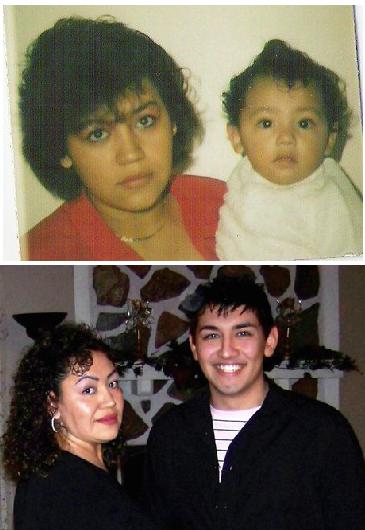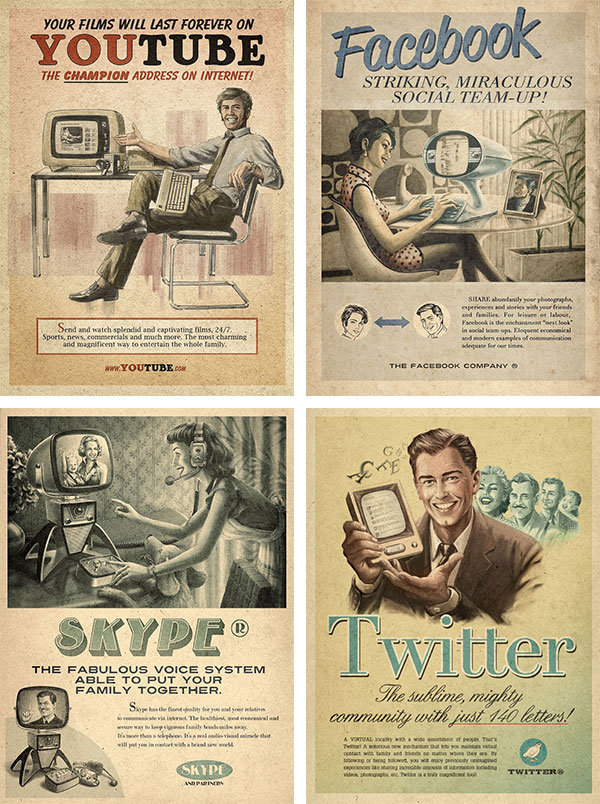“Hey, I can’t talk. Text me, okay?”
:::CLICK:::
How many times have you heard this, or said this, when talking to a friend or a family member? The reality is that talking on the phone has almost become a thing of the past. Talking on the phone seems to be coming in second to text messaging. It’s almost as if talking on the phone has become a hassle when you could easily just send a text in under 120 characters and get your point across. In addition, text messaging seems to offer benefits which you would not get from a phone call. While you may be able to hear a persons voice and their emphasis on words, one is not always in a situation where talking on the phone is appropriate. For example, being able to communicate with people during a loud concert or in a quiet environment. Whether you’re in a meeting, in class, or on the treadmill, it is simple and easy to text wherever you may be.
Text messaging has revolutionized the social culture of which we are a part of. In schools there is no longer a need to pass notes in class and risk someone seeing it. On dates, theres no need to wait until you get home to tell your friends of how it went. Now you can keep them continuously updated as it occurs. If a parents or coaches need to send reminders they can send a mass message within seconds. However, like with everything in this world, text messaging can also be used for darker motifs. From mass forwarding of inappropriate pictures to bullying someone via messages, texting has allowed people to do much harm. However, though there are negative uses for digital messaging, the benefits greatly outweigh them.

In our world today, it is almost impossible to thrive without being on the social radar. It’s almost as if we were shackled at the ankles and limited as to how far we can go before reaching our boundaries. For example, have you ever seen a large elephant tied with a simple rope or chain and thought, “that elephant could clearly break that and be free” ?
 When baby elephants are being tamed and broken, they are tied with a rope by their hind legs. The baby elephants are then placed within sight of their mother. Since the mother elephant has been broken, she does not react in the same way that the young elephant does. The baby elephant will persistently wear itself out in an attempt to be free and reach its mother, until it eventually gives in to the boundaries of the rope.
When baby elephants are being tamed and broken, they are tied with a rope by their hind legs. The baby elephants are then placed within sight of their mother. Since the mother elephant has been broken, she does not react in the same way that the young elephant does. The baby elephant will persistently wear itself out in an attempt to be free and reach its mother, until it eventually gives in to the boundaries of the rope.
Then, as an adult, it doesn’t realize the potential strength which it possesses because it has been forced to conform to the boundaries of the rope. While everyone else sees the elephant as this great and powerful being, the elephant still thinks otherwise. The elephant does not realize that time has passed and it is now much stronger than it used to be. In the elephant’s mind it has trained itself to believe that this is how life will be. It believes it has lost it’s freedom and is under the control of someone else. We are just like those baby elephants. The digital world is our rope. As time passes we seem to convince ourselves that we need to be heavily involved with digital media in order to survive…even when it puts our life at risk.
In recent years laws have been created to ban the use of digital objects while driving due to a numerous deaths caused by them. The most widely discussed is the use of texting while driving. Even with laws not being in effect, and PSAs being broadcasted, a significant number of people can be seen texting while they drive. This digital age has consumed us and made us believe that something as simple as a short text can’t possibly threaten our well being. The harsh reality is that within the past few years the number of car accidents and fatalities related to texting while driving have been multiplying tremendously. Nearly 500,000 young adults each year are injured due to various forms of distracted driving, including texting, mobile instant messaging, updating social media platforms, sending photos, etc. The problem is the fact that most people don’t really think there is a problem. In a survey done in 2011, 77% of young adult drivers claimed they are very/somewhat confident that they can safely text while driving. (Ad Council, 2011)

The Ad Council began working together with the office of the State Attorneys General and the National Highway Traffic Safety Administration (NHTSA) to create a Texting and Driving Prevention campaign known as Stop the text. Stop the wrecks. The campaign is aimed at educating young adults about the dangers of distracted driving, though with today’s growing trends in social media is has began applying to more and more adults. From radio spots to television commercials, the campaign has taken off successfully and brought a new light to how deadly a simple text message can be. For more information, facts, and tips on how to avoid texting while driving, click on the link above or visit www.stoptextsstopwrecks.org
In chapter 8 of Sherry Turkle’s famous book, Alone Together, we are presented with the idea that every person is consistently on and functioning, almost like a robot (or as Turkle would say: “cyborg”) This theory that we are constantly connected with the rest of the world isn’t just true, but it’s become more real every single day. As a college student living on campus I see the effects of this every single day. When we wake up, we check our mobile devices. On our way to class, we are checking our mobile devices. When we sit through class, people are on their mobiles. The pattern just continues. As a college student living on campus I see the effects of this every single day. When we wake up, we check our mobile devices. On our way to class, we are checking our mobile devices. While we sit in class, we are checking our mobile devices. We may be somewhere PHYSICALLY, but MENTALLY we are somewhere else.
In the short clip above, the boss seems more interested in his text messages than his employee. The moral: “Good leaders are always present.” This is especially true in today’s digital world. We are so involved with our technology that we seem to lose track of our physical world. We choose to check our Facebook while we sit at a table with our friends, rather than fully engage in conversation. While we may always be connected to the world around us, we need to take time off to look at the things right in front of our faces.
“When media are always there, waiting to be wanted, people lose a sense of choosing to communicate.” -Sherry Turkle

In chapter 12 of Turkle’s Alone Together, we are introduced to the topic of online confessional sites. These sites serve as a release for people who are keeping a secret that they cannot unload on someone they know. Instead, the sites are completely anonymous, and are viewed by hundreds of other people online. The most popular confessional site is known as PostSecret. On PostSecret one is able to see a wide spectrum of confessions which have been posted for the world to see. From confessions of cheating to confessions of love and mourning, it covers numerous topics.
“Confessing to a friend might bring disapproval. But disapproval, while hard to take, can be part of an ongoing and sustaining relationship. It can mean that someone cares enough to consider your actions and talk to you about their feelings.” Turkle 231
Posted: February 19, 2012 in Uncategorized
What exactly is “digital culture“? Basically, it is the age of information. Yes, yes. We’ve all heard that books hold the power of knowledge. However, in today’s modern world, information is at one’s fingertips through the help of the internet. If we really break it down and analyse the way in which this new digital culture works, we must observe it’s three major componenets: remediation, participation, and bricolage.
Remediation refers to the process of taking something which already exists and providing new views and meanings for them. A good word for describing remediation would be “remix”. We’ve all heard our favorite songs be “remixed” to where the beat is different, additional artists are featured in the song, etc. The same concept is applied to other things which we see offered in today’s media. For example, people who use Twitter to recieve new updates are using a remediated form of new broadcasting to gain knowledge of the latest events occurring in the world around them. Another form of remediation is the use of avatars in games, such as Second Life or The Sims.
Participation, or the contribution of the public audince for a common purpose. Forms of participation include things which we use and do on a daily basis. For example, the use of tagging people on Facebook, writing in community blogs, and adding/updating the information offered on Wikipedia. Remediation and participation are both brought together to create the third part of digital culture which has come to be known as bricolage.
 Bricolage can be easily explained in three simple words: Remix, Reuse, and Redistribute. In breaking this down it can be described in a simple process. Let’s use the gossip over a celebrity’s chaotic breakdown in front of the paparazzi. Every entertainment news source will have their own recount of the events that took place. We, as the audience, use different forms of communication to gather all information pertaining to the subject. After gathering information from a number of sources, the reader proceeds to piecing all the different portions of information together into an overall product. Once this is accomplished, the final result is posted and redistributed through multiple forms of media including Facebook, Twitter,WordPress, word of mouth, etc.
Bricolage can be easily explained in three simple words: Remix, Reuse, and Redistribute. In breaking this down it can be described in a simple process. Let’s use the gossip over a celebrity’s chaotic breakdown in front of the paparazzi. Every entertainment news source will have their own recount of the events that took place. We, as the audience, use different forms of communication to gather all information pertaining to the subject. After gathering information from a number of sources, the reader proceeds to piecing all the different portions of information together into an overall product. Once this is accomplished, the final result is posted and redistributed through multiple forms of media including Facebook, Twitter,WordPress, word of mouth, etc.
When one hears the word “immigration” in the United States the first thought in one’s head is more often than not the word “Mexican”.
In Dr. Wilson’s Intercultural Communications class we watched a film titled “Little Alien” in class dealing with the illegal immigration of unaccompanied minor refugees. In the film, the immigrant boys were constantly moving from one country to another in search for a better life. The application for migratory relief is a long process, and the boys choose to risk what they and migrate without proper documentation. The main difference between the two forms of migratory relief is that asylum seekers are already on U.S. soil, while refugees are outside the U.S. In the film, the young minors discuss being beaten and mistreated by immigration officers and police when they are caught or deported. In recent years the controversy regarding illegal immigration in the United States has rapidly taken off, especially during the political office campaigns.
Leaving one’s home to pursue the dream of a better life gives one the strength and courage to move forward through the hardships which life places before them. This is exactly what the underage refugees do in the film. They go through the tough reality of being unwanted for being outsiders, the struggle of having little or no money for food and shelter, and the hardship of not having an adult to care and protect them. However, though these feelings may be magnified because they are minors, the feelings and notions apply to anyone, no matter their age.

My Mother left her entire family and came to the U.S. in order to offer me a better future. We crossed the border illegally, and we were caught by immigration the first time. However, she was persistent to cross in any way that she could. By no means am I saying that our living situation in Mexico City was bad, because my family in Mexico is well established. My father was already living in the U.S. with his siblings and my grandmother, and he convinced my mother to leave it all behind to cross over saying it would all be worth it. In asked why she left everything she responded, “You really need to ask? I did it for you and your sister. I wanted you and your sister to have a better life and more opportunities to succeed.” She told me the first time we attempted to cross the border we were caught by immigration at a safe house near the border. “I remember immigration coming into the house with guns telling everyone to stay in place. I just held you in my arms and you just looked at me and at everyone with a look of innocence wondering what was going on.”
As I asked her about the second time we crossed she explained how many of them were nervous to have a woman carrying a baby. “It was a lot of risk. The risk of you crying and getting us caught. The risk of something happening and holding the group back. Not once did I let go of you though”, she said with a prideful look on her face. She explained how I was asleep but once we began entering the water I woke up. “When you were a baby you were fascinated with the moon. I’ll never forget how the moon looked the night we crossed. It was a full moon and I don’t think it has ever looked so big. You would just look at me and say ‘luna? luna?”
Though immigration was a large struggle for my family, I’ll never be ashamed to say I’m an immigrant. I fully understand why people choose to risk it all in order to immigrate into a new country. The chance for a new life with greater opportunity and pursuit of happiness are worth risking it all. The stakes may be high, but the end result is something much greater. As I look back through the struggles and the tears, I realize that it made me into the person I am today. The boy who started school knowing only the word “teacher”, and who was taught by his own mother who didn’t speak English as well, is now the college guy writing this blog.
“Remember, remember always, that all of us, and you and I especially, are descended from immigrants and revolutionists.”
– Franklin D. Roosevelt
Posted: November 28, 2011 in Uncategorized

Communication is the imparting or exchanging of information
In today’s globalized environment it is almost impossible to be restricted from all media, news, etc. from beyond what is occurring locally. The process of communication is at the touch of our fingertips. From cell phones to laptops, it is easier than ever before to share information and communicate with the world around us. As with any great invention and innovation, the use of such things can be put to use for the work of, both, the good and the bad.
Religion consists of the details of belief as taught or discussed.
The controversial topic of religion. Who believes in what to explain why and how. A bit confusing, huh? Though freedom of religion is a constitutionally guaranteed right, there seems to be quite a controversy as to exactly how far people are pushing this freedom. From the Westboro Baptist Church protests to the anti-homosexuality groups that gather at Kennesaw State University, it seems some people are taking full advantage to their rights. Maybe someone should remind them that some of the very people they are protesting and hating against are the very ones fighting overseas in order for them to have those rights.
Art is the expression of human creative skill and imagination.
So what exactly is art? From Picasso and Frida Kahlo to Andy Warhol and Claes Oldenburg, there is a wide range of what art can be. Just as religion, the topic of “what is art?” can grow from a simple conversation to a heated dispute. I guess its true when people say that beauty is in the eye of the beholder.
Religion would not be possible if it were not for Communication. Art is a form of Communication.
Therefore, can be said that Communication is among the greatest concepts of human life and interaction?
Yes, I believe it can.
Fam·i·ly
| noun /ˈfam(ə)lē/ |
A group of people related to one another by blood or marriage.
Family, also known as one’s “kin”, can often be a way of deciding how loyalty and intimacy is shared by one among their relatives. Though the definition of family uses the phrase, “by blood or marriage” to specify the relation between family members, the meaning of Family varies from person to person. Personally, I believe family is a group of persons whose members love and try to help each other, whether they are related by blood or not. As they say in the famous proverb—Blood is thicker than water, a traditional family usually shares blood. However, the meaning, and common depiction, of what a family consists of has changed since the commonly portrayed Nuclear Families of the 1940’s. People are moving away from the “traditional family” and moving to the idea of a “modern family”.
Take a second to think about the word Family. When one thinks of the word family, the first things to come to mind are: Mom, Dad, Siblings, Grandparents. However, in today’s world it seems as if the term family encompasses a broader spectrum of people. From long time family friends to college roommates, the blood-based guidelines of the word family have been let loose. Being Mexican, the term Familia is not ever limited to immediate family. In my familia we include extended cousins, aunts, uncles, and even my roommate/best friend, Andrew Bradshaw. While this is how I see my family at the present time, the future is something a little new and blurry to me.
Being a gay male in this modern age, I would say the topic of “Family” is something I ponder about time and time again. We’ve all heard the negative comments and hateful jeers people make at the thought of a Gay family. On the news we hear about the controversy involving the debate of gay marriage, and on commercial breaks we see public service announcements condemning gay marriage as well as gay families with children.
The Declaration of Independence says that we are all created equal, endowed by our Creator “with certain unalienable Rights, that among these are Life, Liberty and the Pursuit of Happiness. ” As of now I am content with the progress that has been made so far, and keep my head up high hoping for the best. James Baldwin once made a very true statement which said, “Everybody’s journey is individual. If you fall in love with a boy, you fall in love with a boy. The fact that many Americans consider it a disease says more about them than it does about homosexuality. ”
Social Structure
When I think of social structure and social groups the first thing that comes to mind is a scene from the movie, “Mean Girls”.
Social structure and social groups are based on a shared interest or attribute which the people within said group hold in common. For example, music majors or members of a particular athletic team. These types of social groups are more common in the adolescent years, and as time passes the focus of these groups seem to change, as well as the members within the groups. Soon it it more common to see young couples with children in one side, while business oriented singles are on the other. Other aspects of the social structure involves one’s socioeconomic class, career field, and even level of education.
Having said this,











